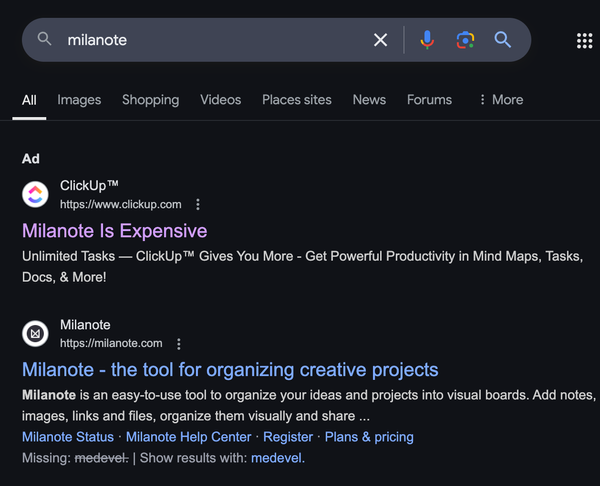Top 9 Open-Source Free Solutions for Anonymous Internet Browsing
Table of Content
In today’s digital age, maintaining privacy and anonymity while browsing the internet has become increasingly important. Whether it's avoiding surveillance, protecting personal information, or bypassing geographic restrictions, the need for anonymous browsing is critical.
Open-source solutions offer transparency, security, and community support, making them ideal choices for those seeking to browse the internet anonymously.
Here, we explore the best open-source solutions available for anonymous internet browsing.
1. Tor Browser
Tor Browser is arguably the most well-known and widely used tool for anonymous browsing. Built on Mozilla Firefox, Tor routes your internet traffic through a network of volunteer-operated servers, concealing your location and usage from surveillance and traffic analysis.
Features:
- Multi-layer Encryption: Encrypts your traffic through multiple nodes in the Tor network.
- Anonymity: Masks your IP address, making it difficult to trace your online activities.
- Access to .onion Sites: Enables access to the dark web.
- No Tracking: Blocks trackers and provides anti-fingerprinting techniques.
Pros:
- High level of anonymity and privacy.
- User-friendly with a familiar browser interface.
- Strong community and regular updates.
Cons:
- Slower browsing speed due to multiple encryption layers.
- Some websites may block Tor traffic.
How to Use:
Download and install Tor Browser from torproject.org. Open the browser, and it will automatically connect to the Tor network.
2. Brave Browser with Tor Integration
Brave Browser is a privacy-focused browser that integrates Tor directly into its private browsing mode. This combination offers a balance of performance, security, and anonymity.

Features:
- Tor Integration: Access Tor network directly from the private browsing mode.
- Ad and Tracker Blocking: Built-in ad blocker and tracker protection.
- Fast Performance: Faster browsing compared to using Tor Browser alone.
Pros:
- Easy to switch between regular and anonymous browsing.
- Better performance than standalone Tor Browser.
- Additional privacy features like ad-blocking and script blocking.
Cons:
- Not as anonymous as using the full Tor Browser.
- Some features may be less customizable than standalone Tor.
How to Use:
Download Brave Browser from brave.com. Open a new private window with Tor by selecting "New Private Window with Tor" from the menu.
3. Tails
Tails (The Amnesic Incognito Live System) is a complete operating system designed to preserve privacy and anonymity. It routes all internet traffic through the Tor network and leaves no trace on the machine it is used on.
Features:
- Live Operating System: Runs from a USB stick or DVD without leaving traces.
- Built-in Tor: All internet traffic is routed through Tor.
- Cryptographic Tools: Includes tools for encrypting files, emails, and instant messaging.
Pros:
- Leaves no trace on the host system.
- Comprehensive privacy and security tools.
- Regularly updated with security patches.
Cons:
- Requires booting from a USB stick or DVD, which may be inconvenient.
- Slower performance due to running from external media.
How to Use:
Download Tails from tails.boum.org. Follow the installation instructions to create a bootable USB stick or DVD. Boot your computer from the USB stick or DVD to start using Tails.
4. Whonix
Whonix is a security-focused operating system based on Debian that uses Tor to provide anonymous internet browsing. It is designed to run inside a virtual machine for added security.
Features:
- Two-Part System: Consists of a gateway and a workstation, both running in virtual machines.
- Tor Integration: All traffic is routed through Tor.
- Isolation: Isolation of applications to prevent leaks.
Pros:
- Strong isolation and security features.
- Designed to be resistant to malware and leaks.
- Comprehensive documentation and support.
Cons:
- Requires a virtual machine setup, which may be complex for some users.
- Resource-intensive due to running multiple virtual machines.
How to Use:
Download Whonix from whonix.org. Follow the instructions to set up and run it inside a virtual machine using VirtualBox or KVM.
5. I2P (Invisible Internet Project)
I2P is an anonymous overlay network that allows for secure and anonymous communications. It is designed to protect users from surveillance and monitoring by ISPs.
Features:
- Anonymous Browsing: Routes traffic through multiple layers of encryption.
- Hidden Services: Supports anonymous websites and services.
- Peer-to-Peer Connections: Securely connect with other users.
Pros:
- Strong focus on anonymity and privacy.
- Supports a wide range of applications.
- Community-driven development.
Cons:
- More complex to set up compared to other solutions.
- Smaller user base compared to Tor.
How to Use: Download I2P from geti2p.net. Follow the installation instructions to set up and configure I2P on your system.
6. Psiphon
Psiphon is a circumvention tool that uses VPN, SSH, and HTTP Proxy technologies to provide uncensored access to the internet. It is designed to help users bypass censorship and access blocked content.
Features:
- Multiple Protocols: Uses VPN, SSH, and HTTP Proxy to bypass censorship.
- Cross-Platform: Available for Windows, macOS, Linux, Android, and iOS.
- Open-Source: Transparent and customizable.
Pros:
- Easy to set up and use.
- Effective at bypassing censorship.
- Cross-platform support.
Cons:
- Not as anonymous as Tor or I2P.
- Relies on central servers, which may be blocked by ISPs.
How to Use: Download Psiphon from psiphon.ca. Install the software and follow the instructions to connect to the Psiphon network.
7. Privoxy
Privoxy is a non-caching web proxy with advanced filtering capabilities to enhance privacy. It can be used in conjunction with other anonymity tools like Tor.
Features:
- Advanced Filtering: Blocks ads, trackers, and unwanted content.
- Privacy Protection: Removes identifying information from requests.
- Customizable: Highly configurable through a user-friendly interface.
Pros:
- Enhances privacy and security.
- Works well with other anonymity tools.
- Customizable filtering rules.
Cons:
- Requires configuration for optimal use.
- Does not provide anonymity on its own.
How to Use: Download Privoxy from privoxy.org. Follow the installation and configuration instructions to set up Privoxy on your system.
8. OpenVPN
OpenVPN is a robust and highly configurable open-source VPN solution. It provides secure and encrypted connections over the internet, helping to protect user privacy.
Features:
- Secure VPN Protocol: Uses SSL/TLS for key exchange.
- High Configurability: Supports a wide range of configurations.
- Cross-Platform: Available for Windows, macOS, Linux, Android, and iOS.
Pros:
- Strong encryption and security features.
- Highly customizable.
- Cross-platform support.
Cons:
- Requires technical knowledge to configure.
- Relies on a VPN server, which may be blocked by ISPs.
How to Use: Download OpenVPN from openvpn.net. Follow the installation and configuration instructions to set up OpenVPN on your system.
9. Shadowsocks
Shadowsocks is a secure socks5 proxy designed to protect internet traffic from surveillance and censorship. It is widely used in regions with heavy internet restrictions.
Features:
- Secure Proxy: Uses encryption to protect traffic.
- Cross-Platform: Available for Windows, macOS, Linux, Android, and iOS.
- Easy to Deploy: Simple setup and deployment.
Pros:
- Effective at bypassing censorship.
- Secure and encrypted connections.
- Easy to set up and use.
Cons:
- Not as anonymous as Tor or I2P.
- Relies on a proxy server, which may be blocked by ISPs.
How to Use: Download Shadowsocks from shadowsocks.org. Follow the installation and configuration instructions to set-up Shadowsocks on your system.
Conclusion
For those seeking to browse the internet anonymously, these open-source solutions provide robust privacy and security features. Tor Browser and Brave Browser with Tor integration offer convenient and effective ways to maintain anonymity.
For more advanced users, Tails and Whonix provide comprehensive operating systems designed to maximize privacy and security. By choosing these open-source solutions, you can ensure that your online activities remain private and secure.
Explore these tools and take control of your internet privacy today!












